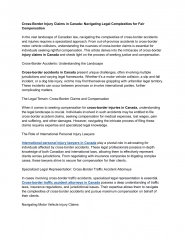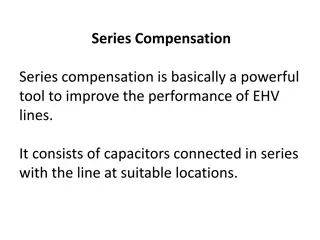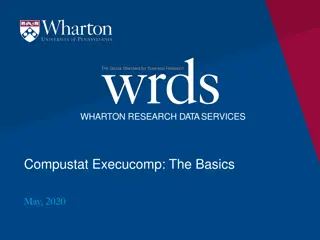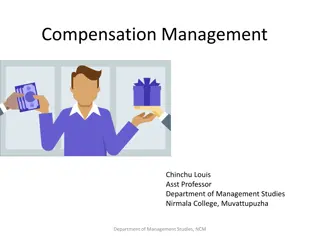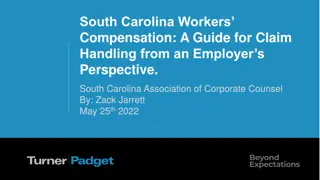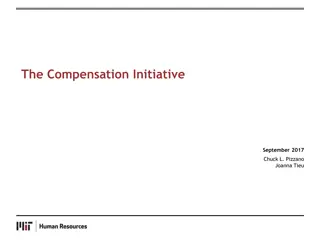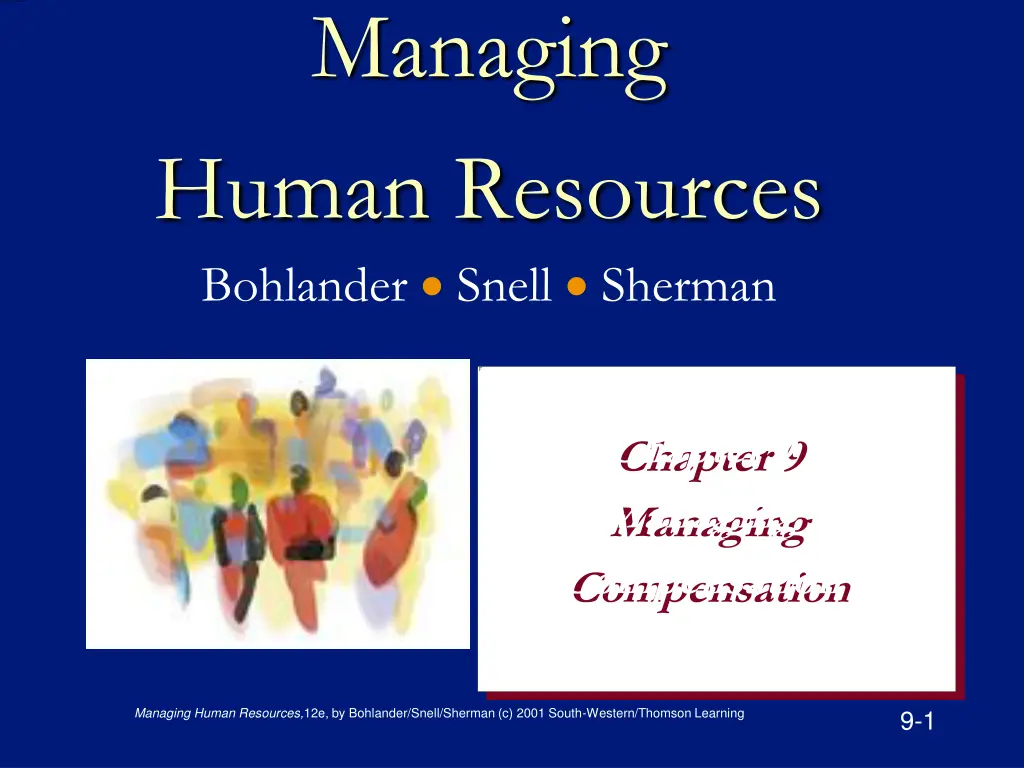
Strategic Compensation Program Development and Management
Explore the various aspects of developing and managing a strategic compensation program in human resource management, including setting wages, job evaluation systems, federal laws affecting compensation, and current issues like equal pay and low wage budgets.
Download Presentation

Please find below an Image/Link to download the presentation.
The content on the website is provided AS IS for your information and personal use only. It may not be sold, licensed, or shared on other websites without obtaining consent from the author. If you encounter any issues during the download, it is possible that the publisher has removed the file from their server.
You are allowed to download the files provided on this website for personal or commercial use, subject to the condition that they are used lawfully. All files are the property of their respective owners.
The content on the website is provided AS IS for your information and personal use only. It may not be sold, licensed, or shared on other websites without obtaining consent from the author.
E N D
Presentation Transcript
Managing Human Resources Bohlander Snell Sherman Chapter 9 Managing Compensation Managing Human Resources,12e, by Bohlander/Snell/Sherman (c) 2001 South-Western/Thomson Learning 9-1
Learning Objectives Explain employer concerns in developing a strategic compensation program. Identify the various factors that influence the setting of wages. Discuss the mechanics of each of the major job evaluation systems. Explain the purpose of a wage survey. Managing Human Resources,12e, by Bohlander/Snell/Sherman (c) 2001 South-Western/Thomson Learning 9-2
Learning Objectives, cont. Define the wage curve, pay grades, and rate ranges as parts of the compensation structure. Identify the major provisions of the federal laws affecting compensation. Discuss the current issues of equal pay for comparable worth, pay compression, and low wage budgets. Managing Human Resources,12e, by Bohlander/Snell/Sherman (c) 2001 South-Western/Thomson Learning 9-3
Presentation Slide 9-1 Total Compensation Total Compensation Direct Compensation Indirect Compensation Pay for Time Not Worked Vacations Breaks Holidays Insurance Plans Medical Dental Life Security Plans Pension Disability Insurance Employee Services Educational Assistance Recreational programs Wages Salaries Commissions Bonuses Gainsharing Managing Human Resources,12e, by Bohlander/Snell/Sherman (c) 2001 South-Western/Thomson Learning 9-4
Presentation Slide 9-2 Compensation Management and other HRM Functions Managing Human Resources,12e, by Bohlander/Snell/Sherman (c) 2001 South-Western/Thomson Learning 9-5
Goals of Strategic Compensation Policies Motivating Value of Compensation Pay-for- Performance Standard Linking Compensation to Organizational Objectives Managing Human Resources,12e, by Bohlander/Snell/Sherman (c) 2001 South-Western/Thomson Learning 9-6
Value-Added Compensation Evaluating the individual components of the compensation program to see if they advance the needs of employees and the goals of the organization Managing Human Resources,12e, by Bohlander/Snell/Sherman (c) 2001 South-Western/Thomson Learning 9-7
Pay-for-Performance Standard Standard by which managers tie compensation to employee effort and performance Managing Human Resources,12e, by Bohlander/Snell/Sherman (c) 2001 South-Western/Thomson Learning 9-8
Pay Equity An employee s perception that compensation received is equal to the value of the work performed Managing Human Resources,12e, by Bohlander/Snell/Sherman (c) 2001 South-Western/Thomson Learning 9-9
Hourly Work Work paid on an hourly basis Managing Human Resources,12e, by Bohlander/Snell/Sherman (c) 2001 South-Western/Thomson Learning 9-10
Piecework Work paid according to the number of units produced Managing Human Resources,12e, by Bohlander/Snell/Sherman (c) 2001 South-Western/Thomson Learning 9-11
Nonexempt Employees Employees covered by the overtime provisions of the Fair Labor Standards Act Managing Human Resources,12e, by Bohlander/Snell/Sherman (c) 2001 South-Western/Thomson Learning 9-12
Exempt Employees Employees not covered by the overtime provisions of the Fair Labor Standards Act Managing Human Resources,12e, by Bohlander/Snell/Sherman (c) 2001 South-Western/Thomson Learning 9-13
Presentation Slide 9-3 Components of the Wage Mix Conditions of Labor Market Compensation Policy of Organization Area Wage Rates Worth of Job WAGE MIX Cost of Living Employee s Relative Worth Collective Bargaining Employer s Ability to Pay Legal Requirements Managing Human Resources,12e, by Bohlander/Snell/Sherman (c) 2001 South-Western/Thomson Learning 9-14
Consumer Price Index (CPI) Measure of the average change in prices over time in a fixed market basket of goods and service Managing Human Resources,12e, by Bohlander/Snell/Sherman (c) 2001 South-Western/Thomson Learning 9-15
Escalator Clauses Clauses in labor agreements that provide for quarterly cost-of-living adjustments in wages, basing the adjustments on changes in the consumer price index Managing Human Resources,12e, by Bohlander/Snell/Sherman (c) 2001 South-Western/Thomson Learning 9-16
Real Wages Wage increases larger than rises in the consumer price index; that is, the real earning power of wages Managing Human Resources,12e, by Bohlander/Snell/Sherman (c) 2001 South-Western/Thomson Learning 9-17
Job Evaluation Systems Job Ranking Job Classification Common Methods of Job Comparison Point System Factor Comparison Managing Human Resources,12e, by Bohlander/Snell/Sherman (c) 2001 South-Western/Thomson Learning 9-18
Job Evaluation Systematic process of determining the relative worth of jobs in order to establish which jobs should be paid more than others within an organization Managing Human Resources,12e, by Bohlander/Snell/Sherman (c) 2001 South-Western/Thomson Learning 9-19
Job Ranking System Simplest and oldest system of job evaluation by which jobs are arrayed on the basis of their relative worth Managing Human Resources,12e, by Bohlander/Snell/Sherman (c) 2001 South-Western/Thomson Learning 9-20
Job Classification System System of job evaluation by which jobs are classified and grouped according to a series of predetermined wage grades Managing Human Resources,12e, by Bohlander/Snell/Sherman (c) 2001 South-Western/Thomson Learning 9-21
Point System Quantitative job evaluation procedure that determines the relative value of a job by the total points assigned to it Managing Human Resources,12e, by Bohlander/Snell/Sherman (c) 2001 South-Western/Thomson Learning 9-22
Factor Comparison System Job evaluation system that permits the evaluation process to be accomplished on a factor-by-factor basis by developing a factor comparison scale Managing Human Resources,12e, by Bohlander/Snell/Sherman (c) 2001 South-Western/Thomson Learning 9-23
Presentation Slide 9-4 Characteristics of Key Jobs Have importance to employees and organizations Vary in terms of job requirements Possess relatively stable job content Are used as important jobs in salary surveys Managing Human Resources,12e, by Bohlander/Snell/Sherman (c) 2001 South-Western/Thomson Learning 9-24
Hay Profile Method Job evaluation technique using three factors knowledge, mental activity, and accountability to evaluate executive and managerial positions Managing Human Resources,12e, by Bohlander/Snell/Sherman (c) 2001 South-Western/Thomson Learning 9-25
The Compensation Structure Wage and Salary Surveys Issues Involved in Setting Compensation Structures Wage Curve Pay Grades Rate Ranges Managing Human Resources,12e, by Bohlander/Snell/Sherman (c) 2001 South-Western/Thomson Learning 9-26
Wage and Salary Surveys Select key jobs. Determine relevant labor market. Select organizations. Decide on information to collect: wages/benefits/pay policies. Compile data received. Determine wages and benefits to pay. Managing Human Resources,12e, by Bohlander/Snell/Sherman (c) 2001 South-Western/Thomson Learning 9-27
Wage and Salary Survey Survey of the wages paid to employees of other employers in the surveying organization s relevant labor market Managing Human Resources,12e, by Bohlander/Snell/Sherman (c) 2001 South-Western/Thomson Learning 9-28
Wage Curve Curve in a scattergram representing the relationship between relative worth of jobs and wage rates Managing Human Resources,12e, by Bohlander/Snell/Sherman (c) 2001 South-Western/Thomson Learning 9-29
Pay Grades Groups of jobs within a particular class that are paid the same rate or rate range Managing Human Resources,12e, by Bohlander/Snell/Sherman (c) 2001 South-Western/Thomson Learning 9-30
Presentation Slide 9-5 Components of the Wage Structure Managing Human Resources,12e, by Bohlander/Snell/Sherman (c) 2001 South-Western/Thomson Learning 9-31
Presentation Slide 9-6 Elements of the Rate Range Managing Human Resources,12e, by Bohlander/Snell/Sherman (c) 2001 South-Western/Thomson Learning 9-32
Red Circle Rates Payment rates above the maximum of the pay range Managing Human Resources,12e, by Bohlander/Snell/Sherman (c) 2001 South-Western/Thomson Learning 9-33
Skill-Based Pay Pay based on how many skills employees have or how many jobs they can perform Managing Human Resources,12e, by Bohlander/Snell/Sherman (c) 2001 South-Western/Thomson Learning 9-34
Presentation Slide 9-7 Federal Wage Laws Davis-Beacon Act of 1931 Walsh-Healy Act of 1936 Fair Labor Standards Act of 1938 Managing Human Resources,12e, by Bohlander/Snell/Sherman (c) 2001 South-Western/Thomson Learning 9-35
Significant Compensation Issues Equal Pay Pay Compression Low Wage Budgets Managing Human Resources,12e, by Bohlander/Snell/Sherman (c) 2001 South-Western/Thomson Learning 9-36
Comparable Worth The concept that male and female jobs that are dissimilar, but equal in terms of value or worth to the employer, should be paid the same Managing Human Resources,12e, by Bohlander/Snell/Sherman (c) 2001 South-Western/Thomson Learning 9-37
Wage-Rate Compression Compression of differentials between job classes, particularly the differential between hourly workers and their managers Managing Human Resources,12e, by Bohlander/Snell/Sherman (c) 2001 South-Western/Thomson Learning 9-38

